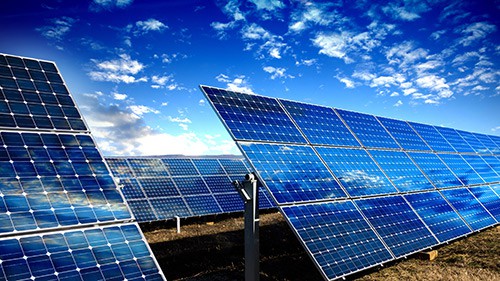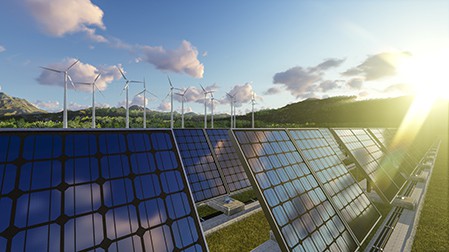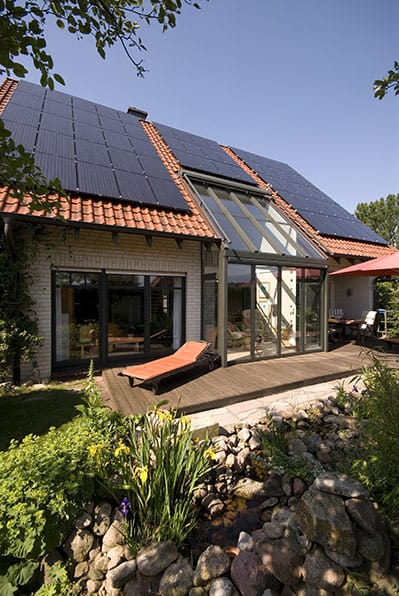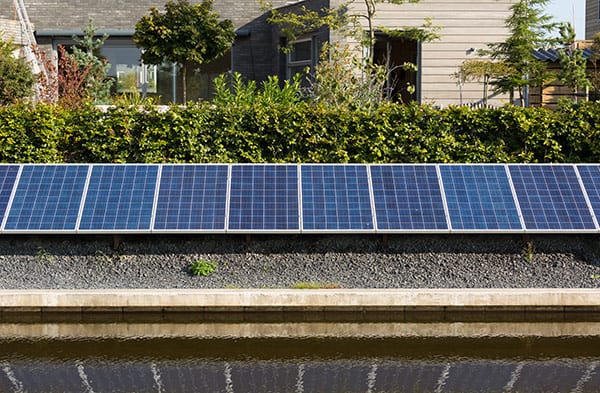 Thinking about going solar?
Thinking about going solar?
More solar panels pop up across the United States every year as Americans choose to harness the sun’s power. With a special thanks to the Solar Energy Technologies Office’s investments, the cost of going solar keeps getting more affordable.
While there is no “one size fits all” solar solution, here are some resources to help you decide if going solar is right for you.
Welcome to solar panels 101!
What is Solar Energy?
Solar energy is energy emitted by the sun.
In other words, solar power is the energy produced from the sun, then converted into electrical energy or thermal energy.
Solar power is the cleanest, most abundant renewable energy source available. And, in the US, solar resources are among some of the richest available in the world. Solar technology uses this energy for various things, including light, electricity, water heating, and more. Solar energy can power domestic, commercial, or industrial buildings.
How does Solar Power work?

The sun is a natural nuclear reactor that releases small packets of energy, known as photons. Photons travel from the sun to Earth (93 million miles) in under nine minutes. These photons generate enough solar energy each hour to, theoretically, satisfy all global energy needs for an entire year.
This is where solar 101 comes into play. When the photons hit a solar cell, they knock electrons loose from their atoms. If conductors are attached to both the positive and negative sides of a cell, it will form an electrical circuit. When electrons flow through such a circuit, they naturally generate electricity.
Multiple cells make up a solar panel, and multiple solar panels can be wired together to form a solar array. The more panels you can deploy, the more energy you can expect to generate.
What are Solar Panels Made Of?
Solar photovoltaic (PV) panels are made up of many small solar cells. These solar PV cells are usually made up of silicon, like semiconductors. Solar panels are constructed with a positive layer and a negative layer. Together, these layers create an electric field, just like a battery.
How do Solar Panels Generate Electricity?
PV solar panels work by generating direct current (DC) electricity. DC electricity works by the flow of electrons in the same direction around a circuit. These electrons move from negative to positive, generating a current of electricity.
AC (altering current) electricity works by pushing and pulling electrons, periodically reversing their direction, similar to the cylinder in a car’s engine.
The US electrical power grid chose to use AC electricity, primarily because it is less costly to transmit over long distances. That said, solar panels generate DC electricity. So, how exactly do we get DC electricity into an AC-based grid? By using a specialized solar power inverter.
A solar inverter can take DC electricity from a solar array and convert it into AC electricity. Think of the inverter as the brains of the operation. Without this technology, we would not be able to take advantage of the sun’s power for electricity.
Benefits of Solar Energy
More than 80 percent of America relies on natural gas, petroleum, and coal together as a main source of energy. So, why is everyone switching to solar power?
Although fossil fuels provide powerful and reliable energy, they are a limited resource and will eventually run out. For example, the gasoline you burned driving to work today took millions of years to harvest, but you used it up in just a few minutes. Once you’ve burned a gallon of gas, there’s one less gallon to go around. In addition, all three forms of fossil fuel must be mined or extracted from under the ground, which is a dangerous task. And expensive, too.
On the other hand, solar energy is a renewable resource (for the next four to five billion years, at least). For example, if you collect 1,500 watt-hours on a Monday, you would not be reducing the amount of solar energy you can collect on Tuesday.
Regardless of how much coal, natural gas, and petroleum you believe remains buried in the earth, those fossil fuels will run out far earlier (and faster) than the life of the sun. The energy usage potential of the sun is nearly unlimited.

Environmental Impacts of Solar Energy
When it comes to environmental impact, solar power is a much more optimal resource than fossil fuels. There is some environmental impact in the manufacture of solar energy. A few toxic compounds are used in their fabrication, and large solar farms may disrupt the local habitat. However, the net environmental impact of solar power systems is quite small, making solar power a source of very clean energy compared to fossil fuels.
While they are consistently reliable, fossil fuels cause significant damage to the environment during their collection and transport. But even more concerning, fossil fuel combustion generates a large number of environmental toxins. As if that weren’t enough, these fuels also produce massive volumes of carbon dioxide, a gas that plays a big influence in global climate change.

Solar Energy Equipment Required to Go Solar
If you’re considering going solar, you’ve probably looked into what equipment is necessary to get started. While much of this can come pre-packaged with solar panel kits, other pieces may require hunting down. But don’t worry, we know this can be confusing and overwhelming, thats why we are here to break down the basics for you!
Here is a list of equipment you’ll need to have a solar powered home:
Types of Solar Panels
Solar panels are (obviously) necessary to produce solar power. Some things to consider when you’re shopping for solar panels include efficiency, warranty, and cost. In addition, you’ll want to look into the technology type of your solar panels. In general, these panels are categorized as one of two technology types: monocrystalline and polycrystalline. Although both types have the same function and are made from silicon cells, the outward appearance and cost differ significantly.
Monocrystalline panels are more energy-efficient but also more expensive. These types of panels come in a dark blue or black tint.
Polycrystalline solar panels are cheaper but less effective. A polycrystalline panel comes in a light blue hue, making them identifiable from other solar technology.
Inverter
As previously mentioned, an inverter is a piece of equipment that converts DC electricity (produced from the sun) into AC electricity (the type of electricity the US electric grid uses). There are several different kinds of inverter options to choose from. They are as follows:
—String inverters: Often referred to as a centralized inverter, a string inverter is a single “string” that connects your solar array to the electrical panel of your home. This is the least expensive option.
—Micro-inverters: Micro-inverters are attached individually to every solar panel, resulting in a maximized production for your array. This option is great for people who rely heavily on electricity in their day-to-day lives. For example, if one of your solar panels is covered by shade from a tree, the other panels can still generate power for your home since every panel is attached individually.
—Power optimizers: A power optimizer is a hybrid of string inverters and micro-inverters.
Solar Panel Racking
You may be surprised to hear that converting to a “solar roof” does not mean that solar panels actually become part of your roof. Rather, the PV panels are mounted onto racking equipment. Racking allows your solar installer to angle the panels for maximum performance without creating any extra damage.
Performance Monitoring & Tracking Systems
One of the best feelings of going solar is watching your electric bills diminish over time. A high-performance monitoring system is key if you want to track the hourly electricity production of your solar system.
Storage Option (battery or grid connection)
A major disadvantage to having a solar-powered home is that, as the sun goes down each day, your electricity will go down with it. But having a solar battery allows you to save solar electricity throughout the day and use it at night.
Solar Panels For Home

There are several different ways you can harness solar energy, including solar heating and cooling, photovoltaics (solar PV system), concentrating solar power, and passive solar.
The first three of those listed are considered to be active solar systems.
Active Solar System
Active solar systems use mechanical or electrical devices to convert the sun’s heat and light into another form of usable energy.
Passive Solar Buildings
Passive solar buildings were created and designed to collect, store and distribute the heat energy from sunlight to maintain the comfort of the occupants inside.
Cost of Solar Power: Savings, Costs & Incentives
The ROI (Return On a Solar Investment)
When calculating the ROI of going solar, several factors play a part in your return on investment. These factors include which plot is available for infrastructure, the location you live in, and the amount of solar radiation per year you’ll be using. If you have enough space to accommodate polycrystalline panels, the system would produce the same output as monocrystalline panels (savings of 10-25%).
As far as long-term investments are concerned, the value of a solar installation will largely depend on how it is financed. When you buy the system upfront, you’ll yield the best ROI. However, even a $0-down payment solar loan would provide savings of around $10,000 or more.
Power purchase agreements (PPAs) or solar leases through community solar programs offer significantly lower savings – somewhere between 10 and 30% of the average home’s electric bill.
How long do solar panels last? A solar panel system pays for itself within eight years (on average). So, if you purchased mono- or polycrystalline solar panels with a 25-year life span, you could easily yield 17 years of cost savings on electric expenses.
Cost of Solar Panels
In the solar industry, the cost of solar panels is generally calculated using dollars per watt.
In 2018, the average installation cost for homeowners was between $2.87 and $3.85 per watt. The gross cost of a solar project averages around $16,000 before tax credits are applied. So, if you assume your household would need 5 kilowatts (kW) of power, your solar panels would cost you anywhere from $10,045 to $13,475 after tax credits have been applied. While some solar panel maintenance is required occasionally, these systems are mostly self-sustaining.
Solar Incentives & Rebates
Since solar incentives and rebates have been introduced, many households have had the opportunity to take advantage of solar energy. For example, the ITC (Solar Investment Tax Credit) allows homeowners to receive a 30% investment solar tax credit to purchase and install solar panels.
Solar incentives, rebates, and tax breaks vary from state to state, double-check what incentives you’re eligible for.
